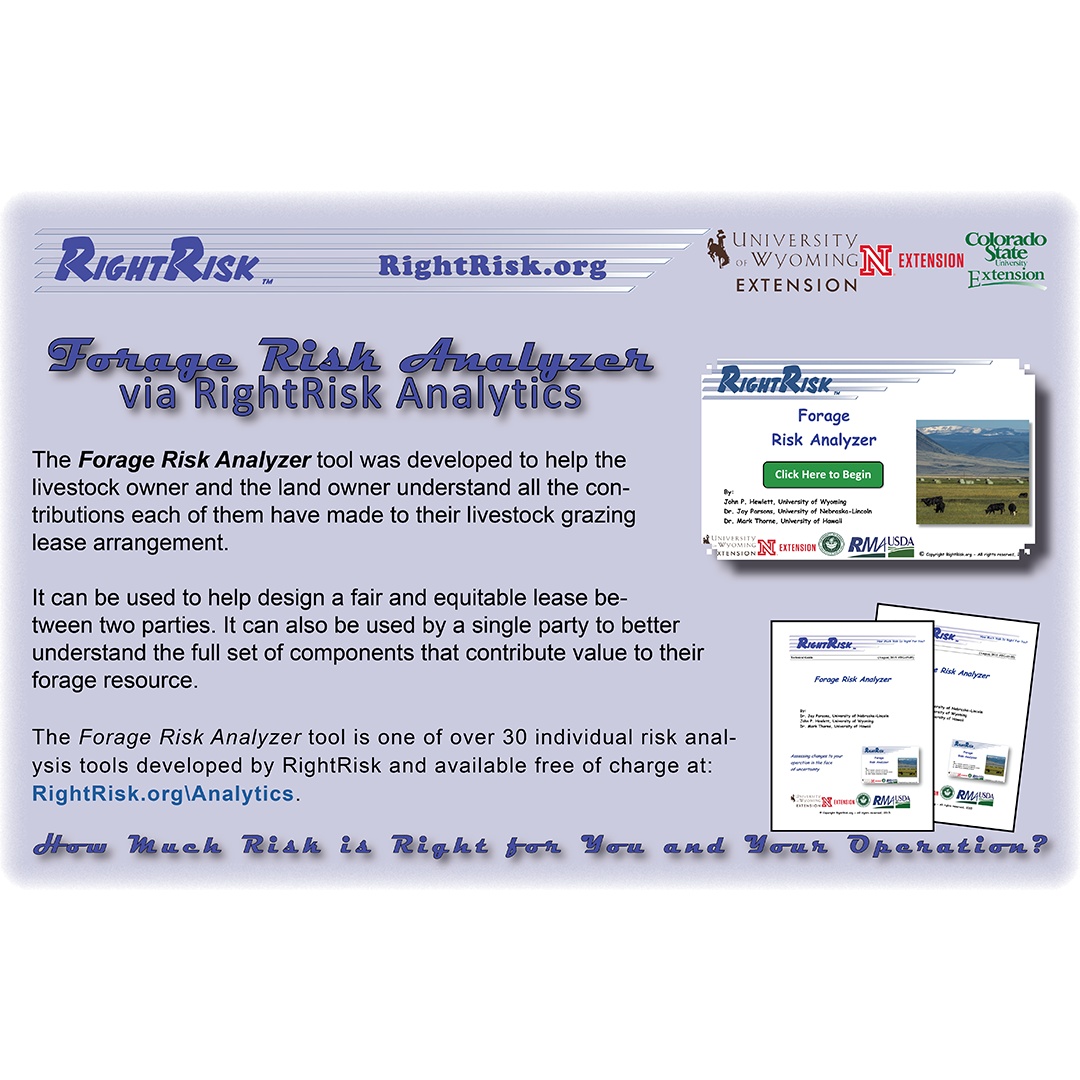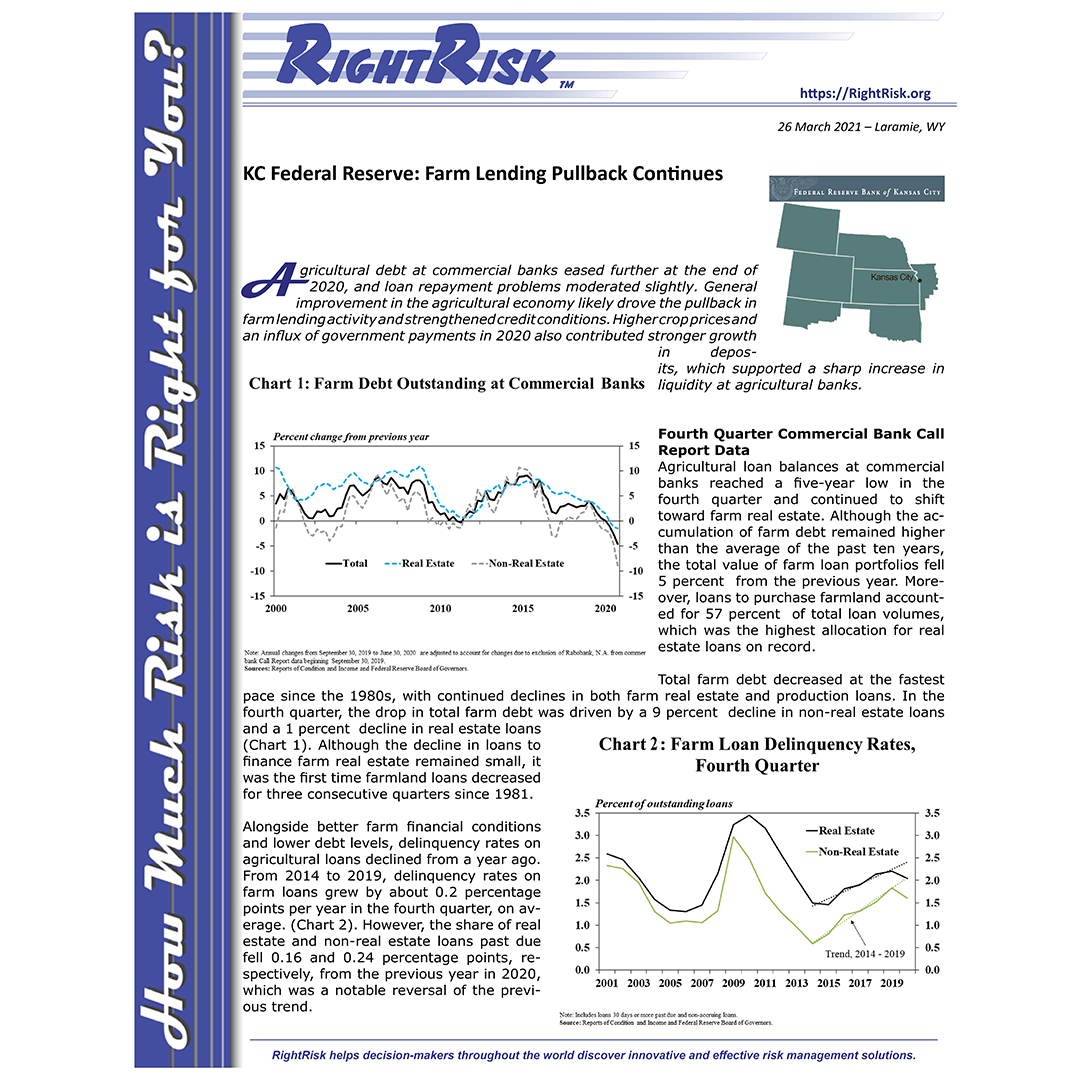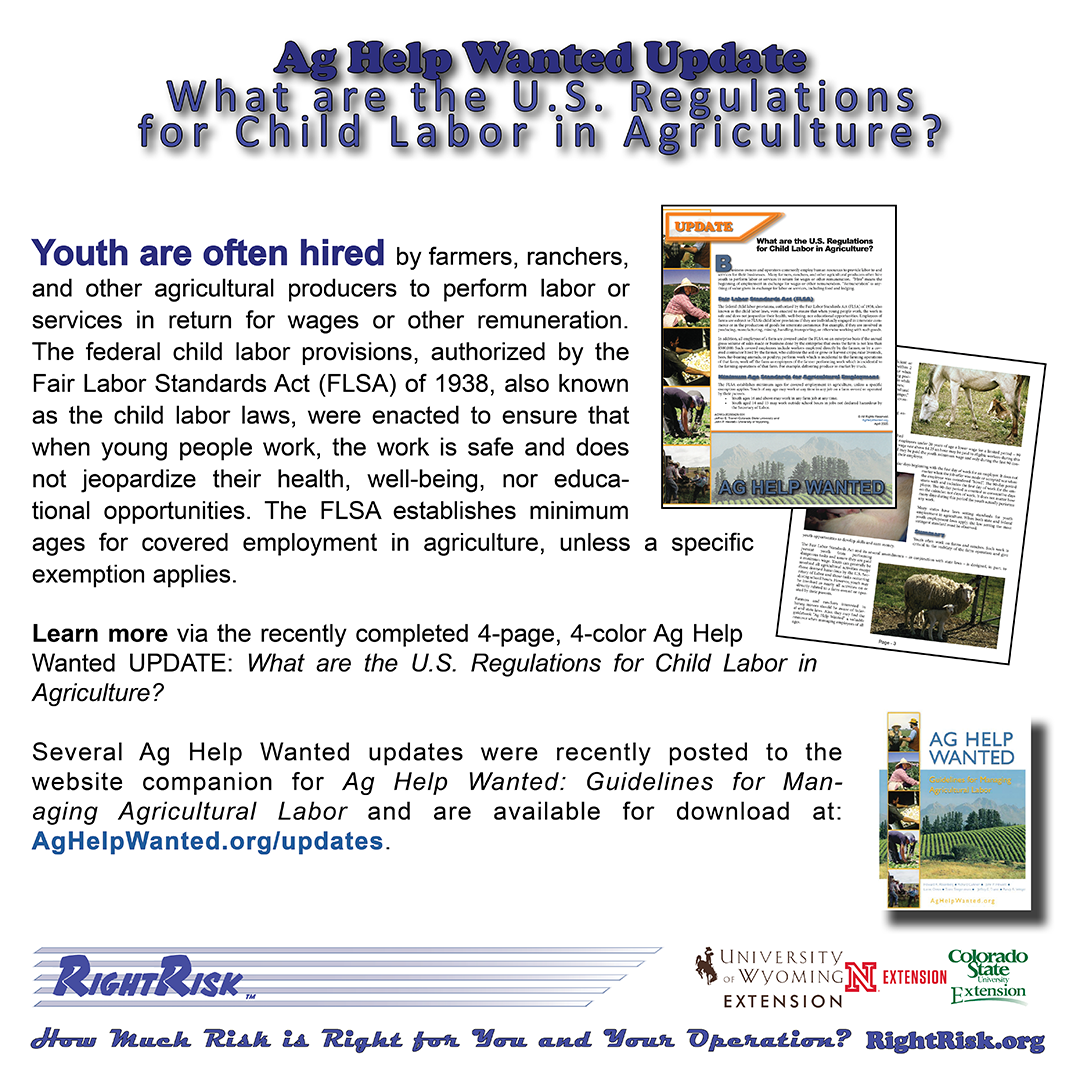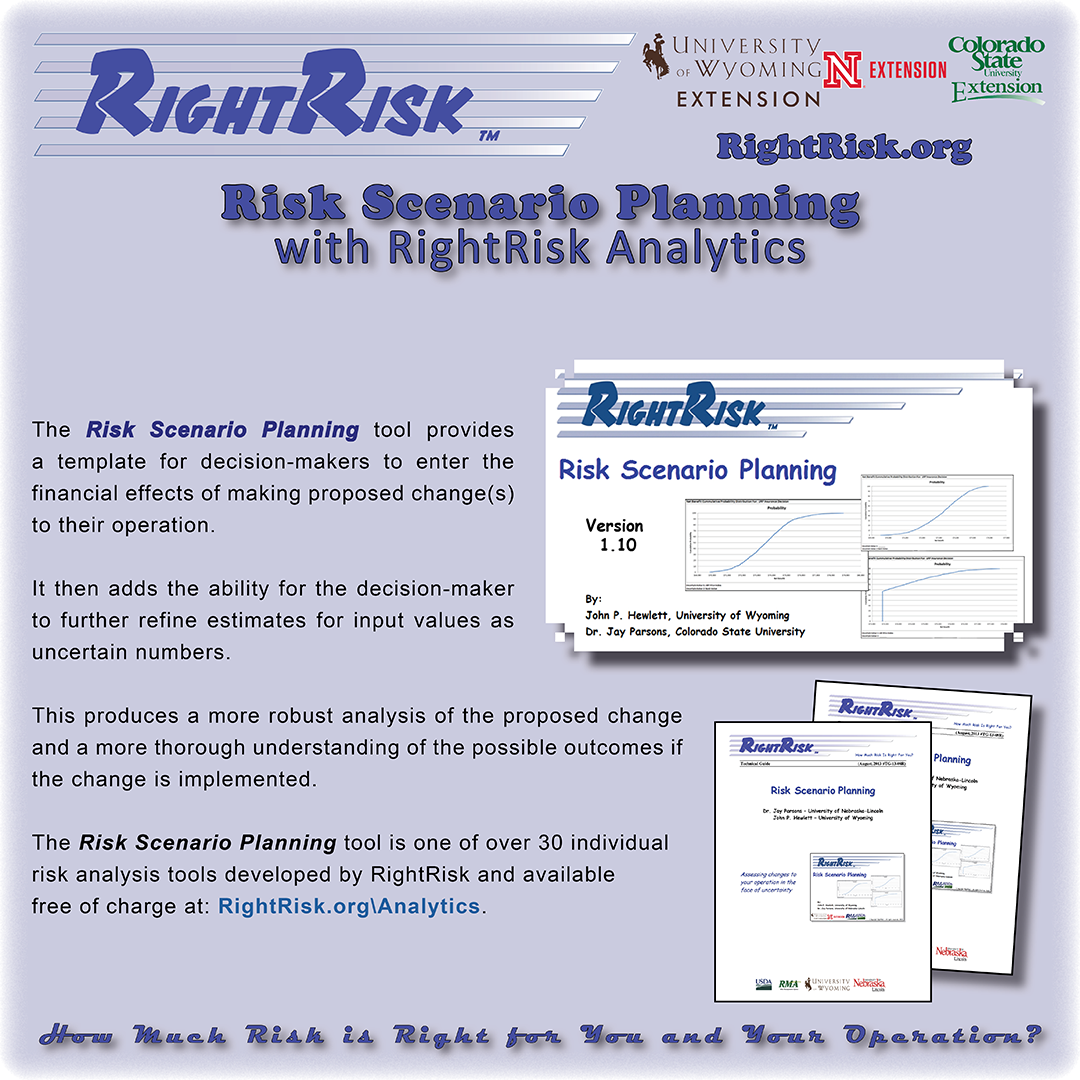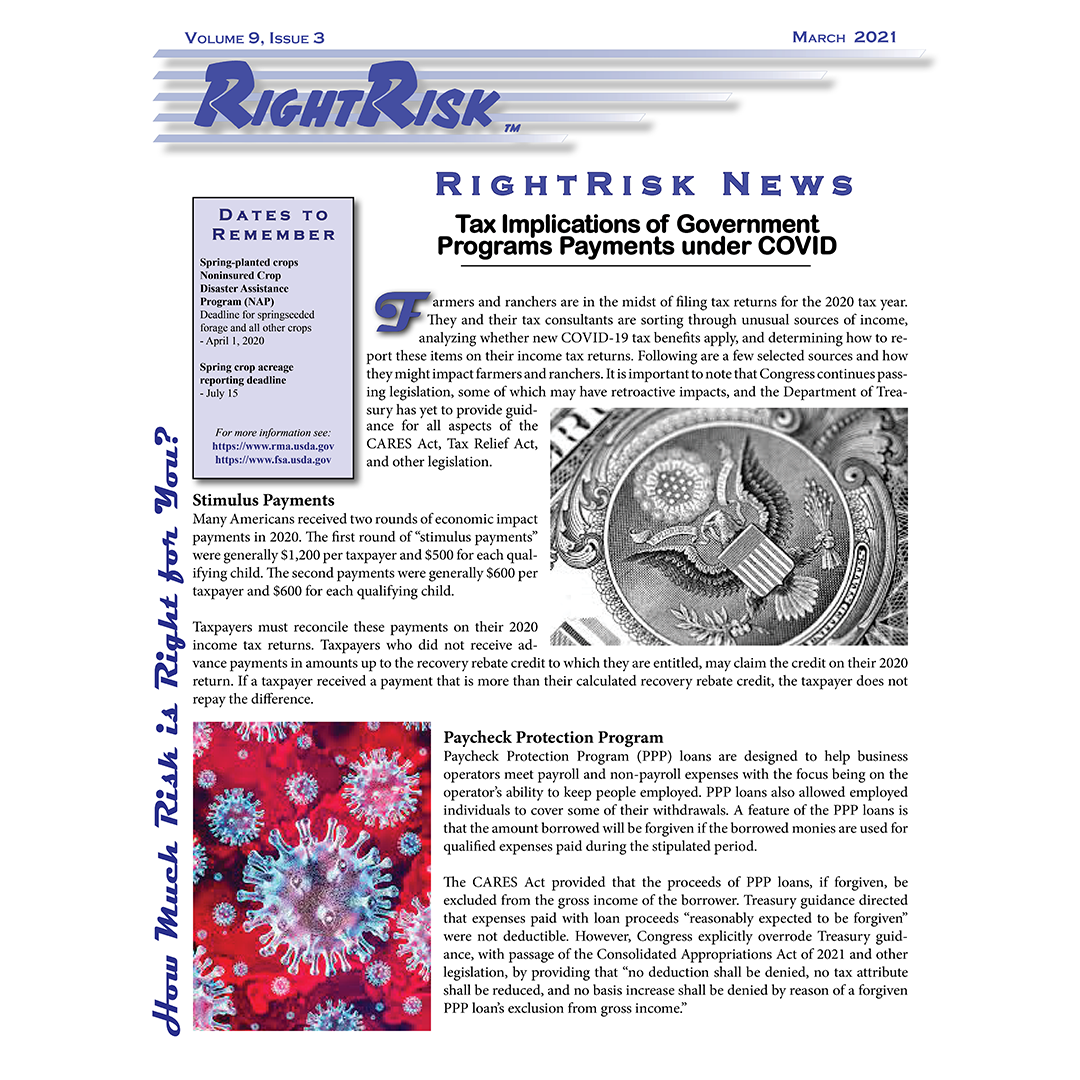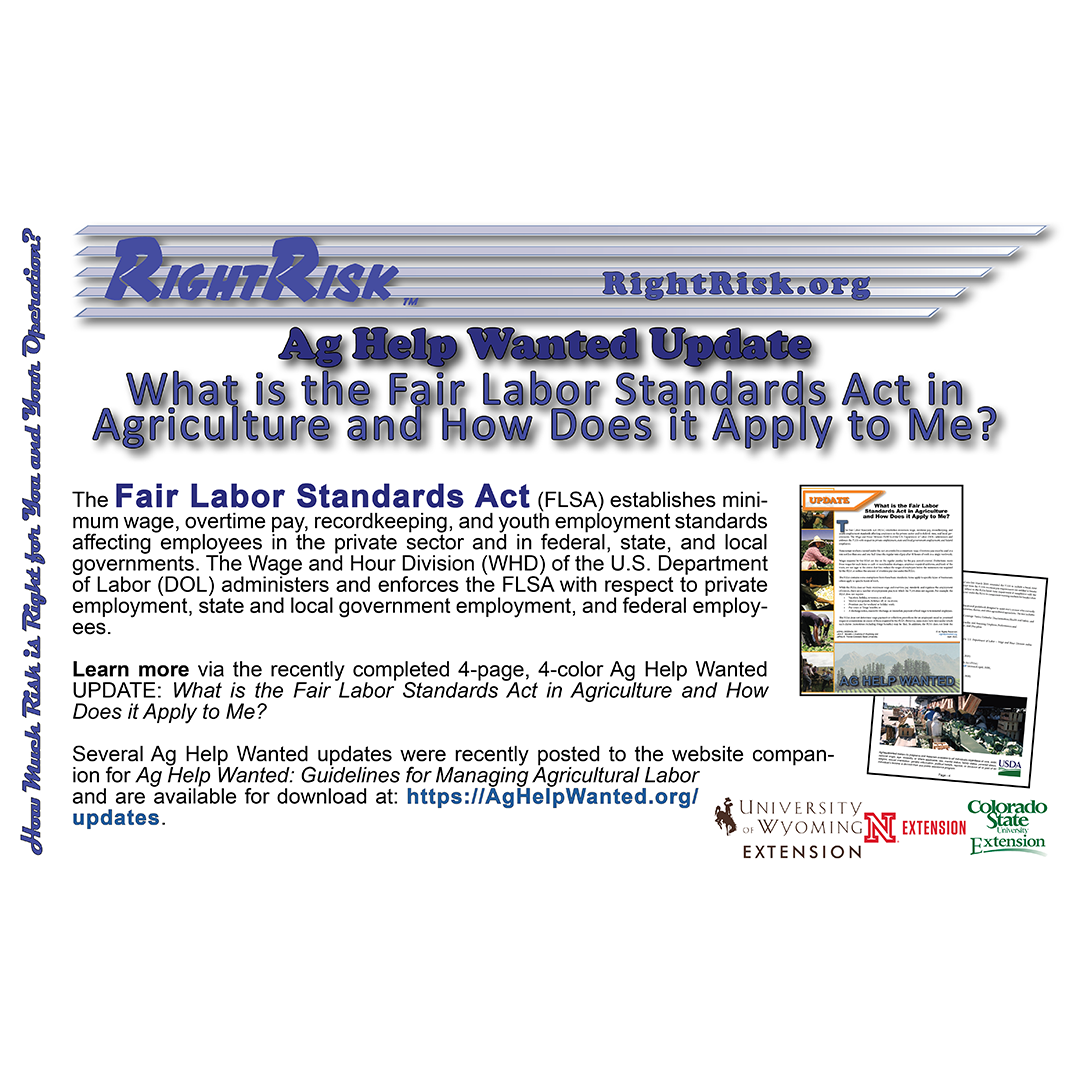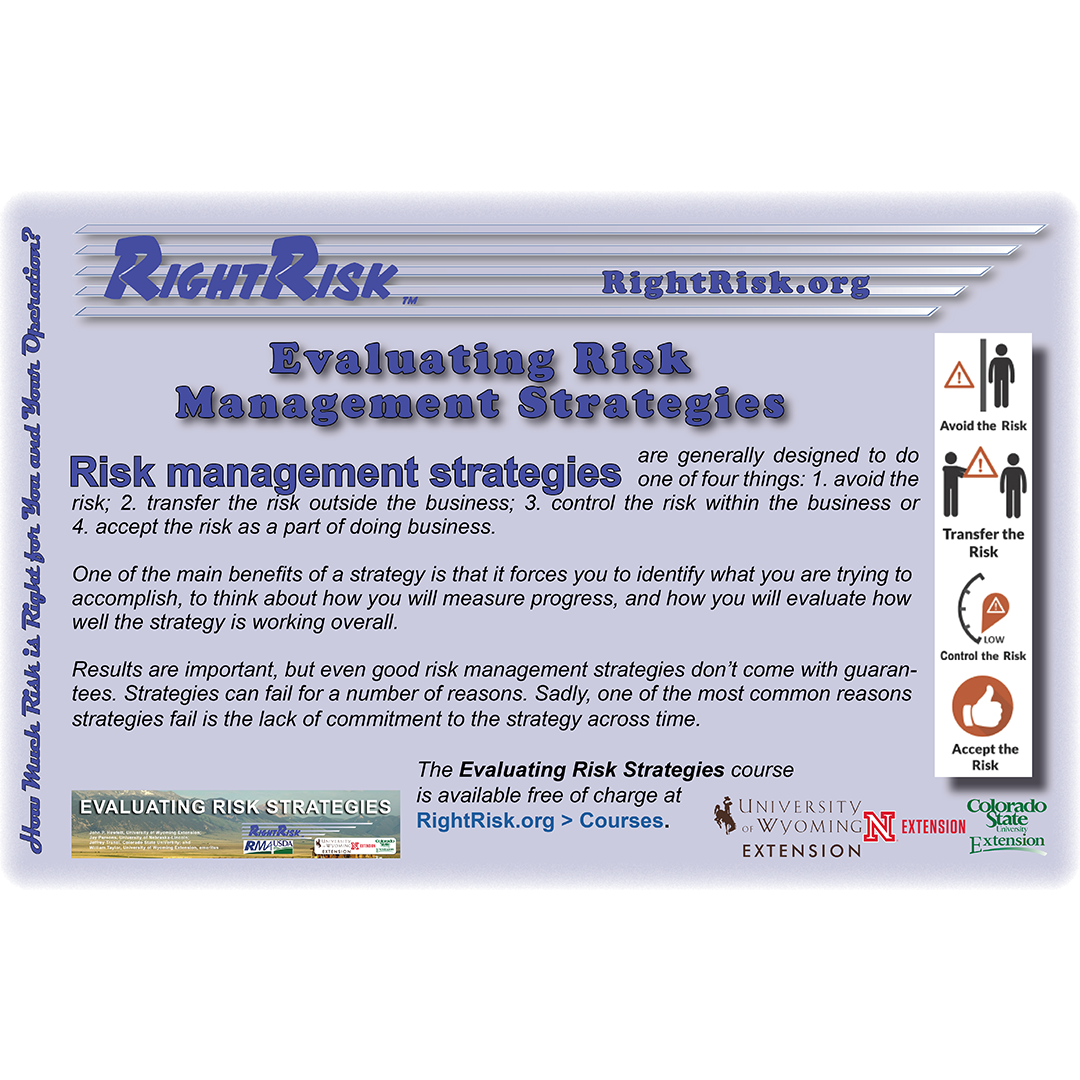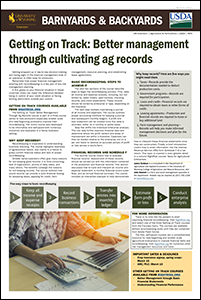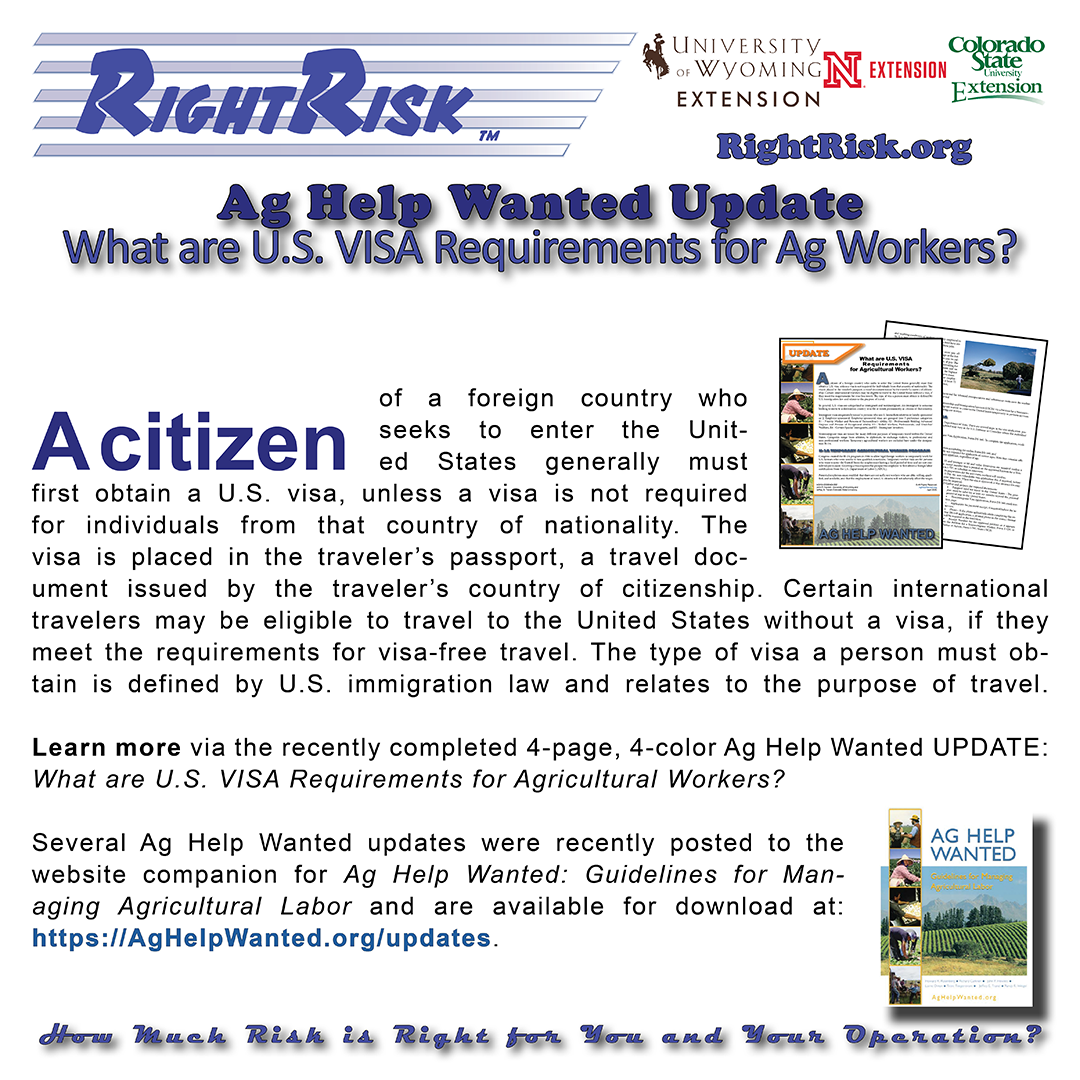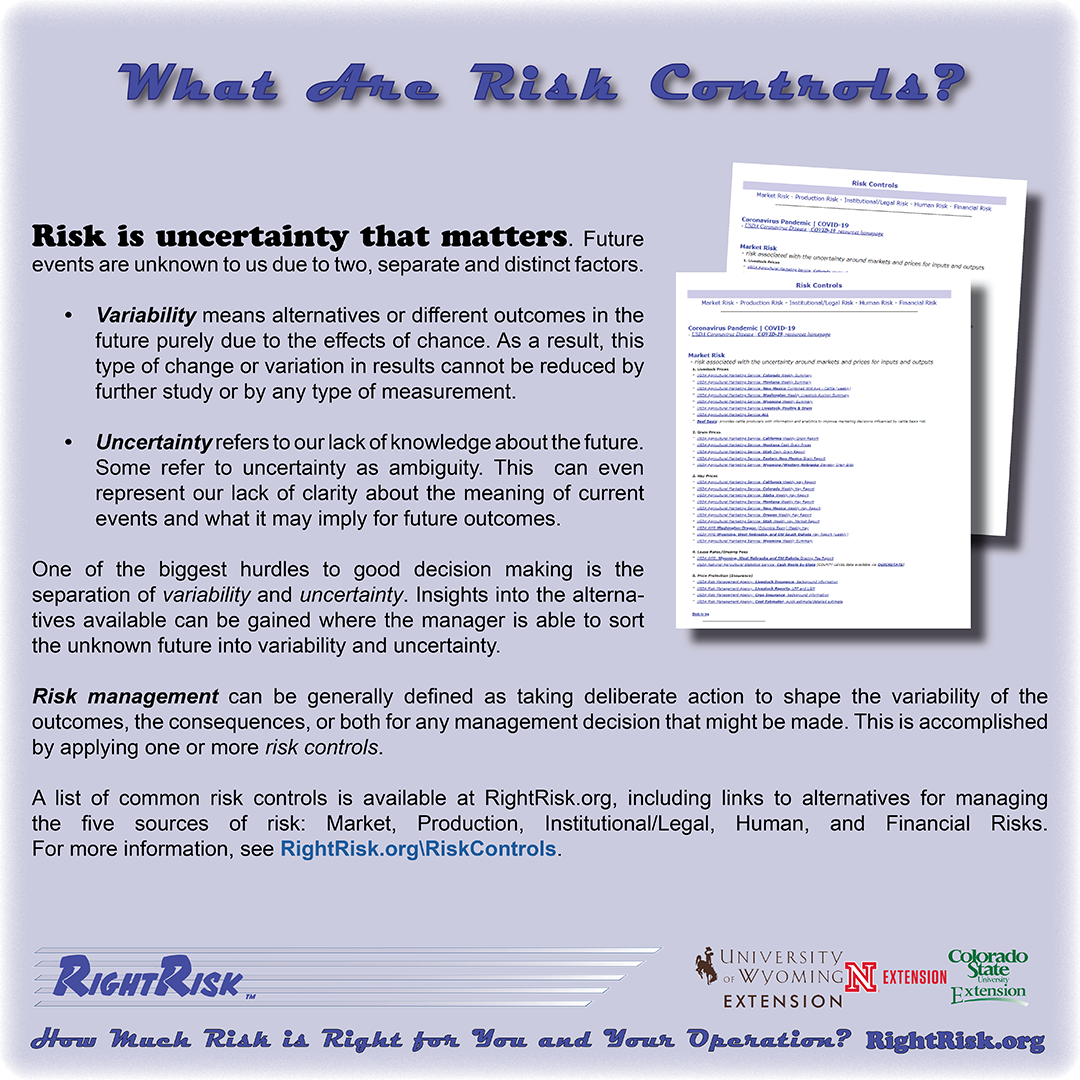The Forage Risk Analyzer tool was developed to help the livestock owner and the land owner understand all the contributions each of them have made to their livestock grazing lease arrangement. It can be used to help design a fair and equitable lease between two parties. It can also be used by a single party to better understand the full set of components that contribute value to their forage resource.
The Forage Risk Analyzer tool is one of over 30 individual risk analysis tools developed by RightRisk and available free of charge at:RightRisk.org\Analytics.
